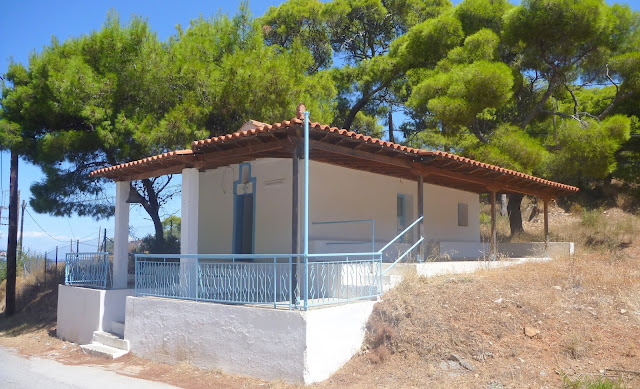On this Earth a Shadow Falls Across the Ravaged Land, Nick Brandt,
at Fotofrafiska Museet, Stockholm.
This exhibition took my breath away. The portraits of the animals Nick Brandt has been photographing for the last twelve years are dignified, soulful and give a real sense of a world under siege. 'It's not hyperbole to say that it's an apocalypse of destruction', he says. 'Elephants are being wiped out at a rate of 35,000 a year. There used to be a demand for tiger penis - now there's so few tigers left, they've moved on to lions. And animals such as giraffes are being annihilated for bush meat sold in urban markets'.
When he first set out to Kenya and Tanzania 'I began with this view of the region as a Garden of Eden - one of the last places in the world where you could see a wide range of different animals en masse. But over the years I began to realise I could no longer photograph that view, so each successive book [in the trilogy of the series] has become darker: when you take their titles, On this Earth, A Shadow Falls, Across the Ravaged Land, it speaks of an arc from a paradise to a much darker but very real vision'.
Raw ivory now fetches up to £500 per kilogram and rhino horn is worth more per ounce than gold dust, according to WWF. Elephants that Brandt photographed just a few years ago have already been killed.

There is a studio portrait quality to these images even though the subjects are animals in their own habitat: it's about how the light falls and how the portrayed sit, and that the personality of the model has been brought out.
In addition to portraits, Brandt shows the animals in the landscape in which they belong. Zebras crossing a river, giraffes in tall grass or a herd of elephants kicking up clouds of dust.
The exhibition forcefully makes the point that it is late on earth. The exploitation of natural resources has left its mark: the average temperature is rising, the glaciers are melting and the deserts are expanding. Brandt depicts how population expansion and poaching, especially of elephants, risk eradicating species that have walked the earth for millions of years.
Hippos on the Mara River, Maasai Mara, 2002
Lion with Monolith, Serengeti, 2008
Rhino on Lake Nakuru, 2007
Giraffe fan, Aberdares, 2000
Cheetah and cubs, Maasai Mare, 2003
Cheetah in tree, Maasai Mara, 2005
Lioness against dark foliage, Serengeti, 2012
Elephant with exploding dust, Amboseli, 2004
Leopard staring, Maasai Mara, 2010
Lion before storm II, sitting profile, Maasai Mare, 2006
'I'm waiting for the moment where the animal seems like they're posing or where they've set themselves into a landscape', Brandt said. This means he can spend weeks with an animal without taking a single photograph. For the profile of the lion in the picture above, he watched it sleep under clear blue skies for 17 days. But the moment of satisfaction finally came when a strong wind blew in and the lion sat up.
Giraffes in evening light, Maasai Mare, 2006
Elephant skull, 2011
Elephants walking through grass, Amboseli, 2008
Two rangers with tusks of elephants killed at the hands of man, Amboseli, 2010
Portrait of elephant on bare earth, Amboseli, 2011
Elephant footprint
Lioness
Elephants alone on lake bed, Amboseli, 2010
Snake on lake bed, Amboseli, 2012
Trophy of lion
Park ranger with two tusks
Calcified fish eagle
Approaching the shoreline of Lake Natron in Tanzania, Brandt came upon an eerie sight: lying on the earth, as still and stiff as statues, were calcified corpses of birds and bats that had died after crashing into the waters. The water has an extremely high soda and salt content which cause the creatures to calcify, perfectly preserved.
Petrified reflected flamingo, Lake Natron, 2010
'Discovering these animals ... I thought they were extraordinary - every last tiny detail perfectly preserved down to the tip of a bat's tongue, the minute hairs on his face. The entire fish eagle was the most surprising and revelatory find', said Brandt. 'The creatures were rock hard. There was never any possibility of bending a wing or turning a head to make a better pose. So we took them and placed them on branches and rocks just as we found them, always with a view to imagining it as a portrait in death'.
Calcified bat
* * *
Lately Brandt has expanded into serious conservation work with his non-profit Big Life Foundation which focuses on wildlife in the Amboselin ecosystem in Kenya and Tanzania. With donations from his photography supporters, the year-old organisation now has 120 rangers, who collaborate with communities to reduce poaching and conflicts between farmers and wildlife.

































































